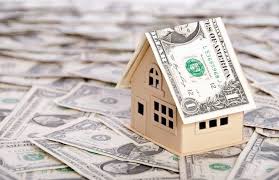
by koredesign | Apr 27, 2017 | LLT, News
-
 Total mortgage application volume rose 2.7 percent last week, according to the Mortgage Bankers Association.
Total mortgage application volume rose 2.7 percent last week, according to the Mortgage Bankers Association.
-
Volume was 18 percent lower compared with the same week one year ago.
The refinance market came back to life last week, as mortgage rates fell further. Homebuyers, however, were not as easily swayed by rates.
Total mortgage application volume rose 2.7 percent, seasonally adjusted, for the week, according to the Mortgage Bankers Association. Volume was 18 percent lower compared with the same week one year ago.
Mortgage refinance volume remains far weaker than it was last year, when interest rates were lower, but it did rise 7 percent week to week as rates sank to the lowest level since just after following the presidential election. The size of the average refinance loan also increased, as large-balance borrowers are more rate sensitive. Refinances are still 34 percent below where they were a year ago.
The average contract interest rate for 30-year fixed-rate mortgages with conforming loan balances of $424,100 or less decreased to 4.20 percent from 4.22 percent, with points increasing to 0.37 from 0.35, including the origination fee, for 80 percent loan-to-value ratio loans.
“The drop was driven by continued investor concerns about the French election, though Sunday’s first-round voting results apparently have alleviated some investor fears,” said Lynn Fisher, MBA vice president of research and economics.
Homebuyers were less concerned with mortgage rates and more frustrated with the lack of homes for sale. Mortgage applications to purchase a home fell 1 percent for the week and are just 0.4 percent higher than the same week last year. The supply of homes for sale continues to drop amid strong demand and low production from the nation’s homebuilders.
Mortgage rates may eventually become a bigger concern. They began rising again this week, as investors turned from the French election to the possibility of U.S. tax reform.
“In general, investors have piled back into riskier assets like stocks because the French election reduces long-term risks to the European Union,” said Matthew Graham, chief operating officer of Mortgage News Daily. “The prospects for tax reform have a similar effect in that they encourage investors to favor riskier assets at the expense of bonds. When demand for bonds decreases relative to supply, rates move higher.”
Read the full article.

by koredesign | Apr 26, 2017 | LLT, News
 The inventory squeeze has left home buyers with fewer options on the market than they’ve seen in decades. While that’s bad news for them, the continuously high demand means it’s one of the best times to be a seller—ever.
The inventory squeeze has left home buyers with fewer options on the market than they’ve seen in decades. While that’s bad news for them, the continuously high demand means it’s one of the best times to be a seller—ever.
“I’ve been selling real estate for 25 years, and this is the strongest seller’s market I have ever seen in my entire real estate career,” David Fogg, a sales associate with Keller Williams Realty World Media Center in Burbank, Calif., told CNBC. “A lot of our sellers are optimistically pricing their homes in today’s market, and I have to say, in most cases, we’re getting the home sold anyway.” He says he recently listed what’s considered an entry-level home in the area—a three-bedroom, two-bath, 1,240-square foot home—for $789,000. The seller received three offers before Fogg held the first open house, which 100 would-be buyers attended.
“It’s very tough. Most of the listings are intentionally listed a little low to get a lot of attention, and it’s not uncommon to get 12 to 16 offers on one property,” says Jilbert Mosessian, a renter in the Burbank area who is looking to buy a home. He says he recently put offers on three homes considerably higher than their listing prices, “and I was told that there were still five people above me and [the seller was] only going to deal with them.”
The inventory of homes for sale decreased by 6.6 percent at the end of March compared to a year ago, according to the National Association of REALTORS®. Unsold housing inventory is at a 3.8-month supply. Most economists consider a balanced market to be a five- to six-month supply. Forty-eight percent of homes in March sold in less than a month.
To better compete, buyers are dropping contingencies and offering more cash down. Real estate professionals also are bracing their clients for potential appraisal issues because in hot markets, homes may appraise below the bid-up sale price.
Continue reading.

by koredesign | Apr 25, 2017 | LLT, News
 Down from 47 days this time last year
Down from 47 days this time last year
Forty-eight percent of homes sold in March were on the market for less than a month, according to housing data from the National Association of REALTORS®. The average for all sold properties, though, was a little higher, at 34 days. Still, that’s down significantly from 47 days a year ago, according to NAR. Nondistressed homes spent a median of 32 days on the market, which is the shortest length of time since NAR began tracking such data in May 2011.
Realtor.com® reveals that the following metro areas had listings on the market the shortest amount of time in March:
- San Jose-Sunnyvale-Santa Clara, Calif.: 24 days
- San Francisco-Oakland-Howard-Hayward, Calif.: 25 days
- Seattle-Tacoma-Bellevue, Wash.: 28 days
- Denver-Aurora-Lakewood, Colo.: 28 days
- Vallejo-Fairfield, Calif.: 31 days
With strong buyer demand supporting shorter times on market, home prices are rising as well. The median existing-home price for all housing types was $236,400 in March, up 6.8 percent from a year ago. “Last month’s swift price gains and the remarkably short time a home was on the market are directly the result of the homebuilding industry’s struggle to meet the dire need for more new homes,” says NAR chief economist Lawrence Yun. “A growing pool of all types of buyers is competing for the lackluster amount of existing homes on the market. Until we see significant and sustained multi-month increases in housing starts, prices will continue to far outpace incomes and put pressure on those trying to buy.”
Read the full article.

by koredesign | Apr 24, 2017 | LLT, News
 Home sales are predicted to decline from record highs in 2016, according to Freddie Mac.
Home sales are predicted to decline from record highs in 2016, according to Freddie Mac.
Prospective homebuyers should expect to shell out more as home prices are going beyond the boundaries of income and as interest rates are increasing.
“Tight housing inventory has been an important feature of the housing market at least since 2016. For-sale housing inventory, especially of starter homes, is currently at its lowest level in over ten years,” said Freddie Mac Chief Economist Sean Becketti. “If inventory continues to remain tight, home sales will likely decline from their 2016 levels. As we enter the spring home buying season, all eyes are on housing inventory and whether or not it will meet the high demand.”
Many homeowners currently feel uneasy in selling their homes due to fear that they won’t be able to find another home they like that’s in their budget, according to Freddie Mac. “fear of not being able to find another home they like and that falls within their budget” and not wanting to let go of their current low mortgage rates are the reasons Freddie Mac cited for low for-sale housing inventory.
Total home sales are forecasted to be at 5.90 million this year and 6.02 million in 2018; house prices are expected to grow by 5.2% this year and 4.1% next year; and total originations are projected at $1.545 billion this year and $1.5 billion next year.
Read the full article.

by koredesign | Apr 21, 2017 | LLT, News
 Mortgage rates continued their month-long swoon, sinking to their lowest levels in five months.
Mortgage rates continued their month-long swoon, sinking to their lowest levels in five months.
According to the latest data released Thursday by Freddie Mac, the 30-year fixed-rate average tumbled to 3.97 percent with an average 0.5 point. (Points are fees paid to a lender equal to 1 percent of the loan amount.) It was 4.08 percent a week ago and 3.59 percent a year ago. The 30-year fixed rate hasn’t dipped below 4 percent since November.
The 15-year fixed-rate average dropped to 3.23 percent with an average 0.5 point. It was 3.34 percent a week ago and 2.85 percent a year ago. The five-year adjustable rate average fell to 3.1 percent with an average 0.4 point. It was 3.18 percent a week ago and 2.81 percent a year ago.
“Weak economic data and growing international tensions are driving investors out of riskier sectors and into Treasury securities,” Sean Becketti, Freddie Mac chief economist, said in a statement. “This shift in investment sentiment has propelled rates lower.”
Because of uncertainty surrounding the French elections and tensions in North Korea, investors are scooping up bonds. That’s driving yields lower. The yield on a 10-year Treasury sank to its lowest point since November on Tuesday, dropping to 2.18 percent. Because home loan rates tend to follow the same path as long-term bond yields, they also fell.
Bankrate.com, which puts out a weekly mortgage rate trend index, found that the experts it surveyed were almost evenly divided on where rates are headed in the coming week. Thirty-eight percent said they would fall, 38 percent said they would hold steady and 24 percent said they would rise. Michael Becker, branch manager at Sierra Pacific Mortgage, is one who predicts rates will remain relatively unchanged.
“To the surprise of many, the dip in mortgage rates continued this week,” Becker said. “Mortgage rates are now at the lowest levels for 2017. The question is will this rally continue, or will rates quickly revert to the higher levels of just a few weeks ago. … Looking forward, it’s hard to see rates dropping further in the coming week. But if first quarter GDP disappoints next Friday, this drop in rates could have further to go.”
Continue reading.

 Total mortgage application volume rose 2.7 percent last week, according to the Mortgage Bankers Association.
Total mortgage application volume rose 2.7 percent last week, according to the Mortgage Bankers Association.



Recent Comments